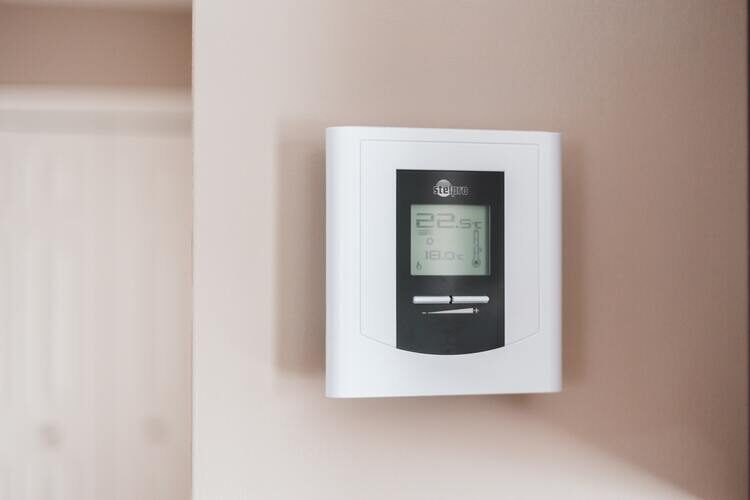
Heating systems can seem complicated and confusing. That’s why we put together this guide to help you understand how your home or business is kept warm from day to day.
In this article, we’ll be discussing:
- What is heating?
- How does a heating system work?
- What are the types of systems?
- Why do you need this?
- Can you use heating with air conditioning?
- Can heating oil freeze?
What is heating?

It provides energy or heat to your home or business, usually via a heating system.
How does a heating system work?

A typical home gets their warmth from a conventional furnace that runs on gas, so that’s the type of system we’ll be going over.
Natural gas gets piped to a burner in a combustion chamber. The warmed gas heats up a heat exchanger; this heat exchanger separates the clean air from the unbreathable gas. The unbreathable air goes through a flue vent and is sent outside. The clean air gets blown by a fan into your home through ducts or piping. The furnace will continue blowing air until your thermostat detects your home is at the right temperature.
More recently built furnaces have a draft inducer blower to help move air through the furnace more efficiently.
You can think of heating systems as being the same as keeping warm by a fire, except the fire’s fumes are separated and the fire is safe to run in your home or business. They both need fuel to keep going, though the heat in a heating system is usually more regulated thanks to thermostats.
What are the types of systems?

You can refer the warm climate control for your home or business as central heating. This means your heat comes from one place. You shouldn’t confuse central heating with a room or portable heater; room heaters only heat a single room in your house and aren’t part of central heating.
There are a variety of heating systems available, such as:
- Electric furnaces
- Uses electric resistance (opposition of the flow of electricity) to heat metal
- Has a central fan
- Typically more expensive
- Electric baseboard heaters
- Controlled by thermostats in each room
- Heating elements in pipes
- Installed under windows
- Water-based or condenser furnaces
- Gas, coal or other oils heats the water
- Can also be steam-based
- Large volumes of water required
- Pumps are required
- Has a boiler
- Heat is distributed by water
- Gas or conventional furnaces
- Already touched upon, but runs on gas
- Heat is distributed by air
- Heat pumps
- Three types: air-to-air, water and geothermal (ground) (collect heat from each of these sources)
- Run off electricity
- Dehumidifying
- Can be ductless
- Move heat rather than generate it
- Hot-water baseboards or radiant slabs
- Water is heated by oil or gas
- Uses convection and radiation to distribute heat
- Baseboards in rooms are heated
Why do you need this?

While you don’t necessarily need to warm your home or business, this can help you:
- Have an increased sense of comfort
- Regulate your body’s temperature
- Sleep better as your body won’t be working so hard to keep your warm, nor will you need as many bed sheet layers
- Enjoy the view from your window as it won’t be entirely frosted over in the winter
Can you use heating with air conditioning?

While you shouldn’t be trying to heat and cool your home or business at the same time, there are heating systems that also double as a cooling system.
Can heating oil freeze?

Unfortunately, the oil used in your system can freeze if the temperature drops too low. You’ll be able to tell your oil is frozen because it looks abnormal or sludgy. Move your oil inside if it’s kept outside, especially during the winter. Sometimes people think the oil in their system has frozen, when the problem actually lies with piping not being properly insulated.
If you’re dealing with frozen oil, feel free to give us a call, and we’ll help you diagnose the problem.
Conclusion

Now that you know more about heating, feel free to reach out to us to help you get a new system installed. If you’re looking to keep your system maintained, which helps it last longer, then we can help you with that, too.
